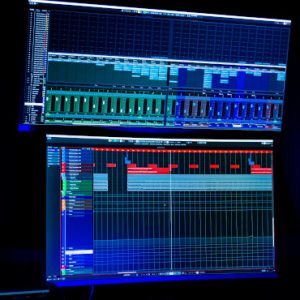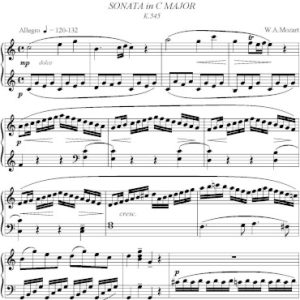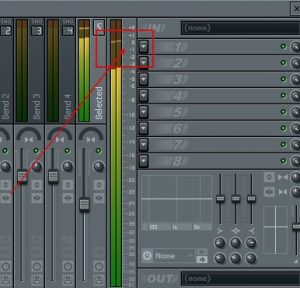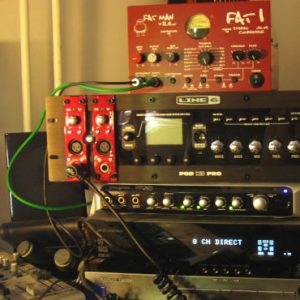Bass Guitar is very hard to mix. It is always the main reason why the mix sounds either dull, thin or mud. The major problem is that all instruments have bass frequencies, but not so heavy as bass guitar and a kick drum. In a mix, all instruments are played together and the primary problem lies in the bass frequencies, it is why every time you heard tracks that are not mixed, it sounds mud.
But take note that a good bass guitar recording is essential for a perfect bass guitar mix. Before you mix your bass to get the clarity and punch it needs; spend some time to get a perfect bass guitar recording. This is very important. If you are having a difficult time getting your bass to sound good in the mix, probably its poorly recorded. Take some time to read this important tutorial on bass guitar recording techniques and ensure that you are recording your bass correctly and in optimum levels.
I have been mixing for years and I love to present these two techniques I learned from experience in mixing. Basically you can only apply one technique per song. But you will have two choices how to approach mixing bass guitar in the mix :
The Rock Bass Guitar Sound Mix
How is this done? In this mix, the objective of the bass guitar is to sound heavy and partly dominant in the mix. As a rock producer, I like the bass guitar to sound aggressive and up front in the mix. Did you notice that once you hear rock tracks today such as Trapt, Green day, Simple Plan, their bass guitar is very dominant? It is a secret of sound engineers in how to make bass guitar loud while avoiding mud.
As a guide, we will designate 45 Hz to 250 Hz as the bass frequencies where kick drums and bass guitar mainly reside. The problem is how to blend those two together.
Since the bass guitar needs to sound heavy and dominant, it should occupy mainly the bottom 45 Hz to 250 Hz. But….
We will dip 100 Hz for the kick drum spikes to shine through. I usually dip the bass guitar around 100 Hz with Q settings of around 2.0 and -9dB reduction.
To balance, I will boost kick drum at around 100 Hz with Q settings of around 2.0 and 9dB~12 boost.
To sound better, I will apply high pass filter or a low shelf filter (so it will attenuate frequencies lower than 50Hz) on kick drum around 50 Hz -3dB reduction, for the deep bass guitar frequencies to dominate the sub woofer, making it sound heavy. If you are not familiar what these shelving filters would mean, you can read this important introductory tutorial on filters. In that posts, you will learn what are these parametric EQ terminologies (most parametric equalizers are equipped with shelving filters):
a.) Low pass filter
b.) High pass filter
c.) Low shelf filter
d.) High shelf filter
But I will not apply boosting to bass guitar at any frequencies between 45Hz and 200 Hz.
I finally boost 250 Hz for bass guitar to make those notes more audible, I use Q of 2.0, and boost at 3dB.
As a rule the kick drum needs to be dip at around 250Hz to 400Hz with Q of 2~3, to remove this card board sound, this makes the bass guitar notes more audible as well as the distortion guitar.
What about other instruments??? It is simple. All instruments are to be applied with high pass filter or a low shelving filter at around 250Hz -6dB reduction.
This will make the bass frequencies 45Hz to 250Hz, a place just for bass guitar and kick drums.
What is the result? A heavy bass guitar sound typical for rock music.









37 Responses
I agree..If you have the Waves plugins as one of your audio mixing tool.
Using the renaissance bass plugin from waves you can add some harmonics to the bass, in some cases this will give the bass more body.
HI. I´d like to thank you for yours tutorials.I´m from Brazil and learning a lot. Thanks
using the renaissance bass plugin from waves you can add some harmonics to the bass, in some cases this will give the bass more body.
Thanks for the tips!
Just one question: were you starting with a miked bass amp or a DI direct line from the bass?
Thank You for your reply. I’m looking forward in using your info on my next song I’m working on. Thanks again for sharing your knowledge and good luck to you in your career!
In mixing, you should do it individually..For example specific EQ for bass, then to kick drum, etc. How you will be able to isolate EQ issues individually if you are doing the EQ adjustments on the main out channel?
Great article. I want to ask do you do the eq adjustments on the main out channel or do you do it on the individual tracks?
Thanks!
Very useful tutorial!! I have been producing records for 20 years, and use principally these same techniques to great effect.
Thanks for this post.. I’ve been mostly working with hip hop artists and I’m now getting into mixing rock and pop.. I’ve tried some of your suggestions and they have improved my rock mixes greatly!! Thanks Again!
I appreciate the compliments. Many thanks also!
You are the best , this tutorial change my life!
Thank you very much for the awesome article, the results are amazing!
Great advice! I am recording a band that does not use bass drum (more 60’s sound but also Stooges/White Stripes sounding. I am playing bass for them (they are a guitar/drum duo)and have not been able to get the bass to fit into the mixes. Too boomy, too quiet, too in-you-face, too hidden every mix sounds good….except for my bass. Nothing has been working.
Tonight I will try placing “bass” and “other” into their specific frequency ranges with Hi and Lo pass filters and see if that helps. I’ll do a “green day” mix and a “country” mix (your two options) and see which way we should go (I expect #1 but w/o the top end as pronounced)
I’ll try to post them over the weekend
[…] Sounds pretty darn good! The left guitar is a little far out front and the snare drum isn't very loud or cracking very hard. You could fatten it up and use compression for a bigger bang. It sounds sort of like a big hi-hat here on my speakers. Here is a great link that I found. After reading it this weekend, I did what it said to do, and remixed my new song. It sounds 100% better now. Inserting high pass and low pass filters at the right place on each instrument makes a world of difference. It explains bass, kick drum, and the other instruments placement. Tips in Mixing Bass Guitar like a PRO […]
[…] Thanks Guys! I read this article and it literally cleared my mix up a lot. I now run high and low pass filters on everything. The filters will only let the bass take up a certain space, the kick drum has it's place, and all other instruments will stay above 250 Hz. Getting the kick and bass guitar in the right place has always been the hardest thing to do for me. Here is the article. I would suggest to save it on a CD for the future, by using print screen or a snipping tool. Tips in Mixing Bass Guitar like a PRO […]
It is a little late to try out those techniques cause it is midnight :)…
I have a question for you.
Have you been working with hip hop instrumentals?? I would like to read about some kick n bass
mixin in that genre.
Also, I ll try this out first thing tomorrow and post comment here.
Big thanks.
Hi Andyx,
Yes I am applying compression only to the bass guitar. It is outlined here: https://www.audiorecording.me/audio-compression-tips-for-mixing.html
I do not compress kick drums…because for me it do not sound nice.
Cheers.
Hi Emerson,
Thank you for such a great tips. Do you also apply any compression to your bass and kick drum tracks to add something like “punch” to kick+bass sound? If yes, could you, please, share you experience with us? Thank you!
This has been a revelation to me. My mixes sound infinitely better, thanks for explaining this as my low end never worked for me until now. Cheers.
Hi Ivan,
I just written a tutorial on how to mix a baritone guitar. Thanks for checking out my blog!
How would you mix a Baritone guitar with standard guitar, bass and drums?
Which range of frequencies the baritone occupies?
What should be the EQ adjustments?
Thanks a lot
Hi Anonymous,
The higher the Q , the lesser will be scope of the EQ adjustments. Small EQ means wide adjustment covering a broad range of frequencies. Q of 1.0 is medium bandwidth. Q of 3 to 4 is small bandwidth adjustment while a Q of 0.5 is a very wide frequency adjustment if we are talking about EQ.
Hi George,
Sorry but I cannot remember receiving your demo. Anyway you can always do a huge sound by either parallel compression or decreasing reverb. Reverb will make the sound thin and ineffective in rock music.
Cheers,
Hi Anonymous,
About your inquiry: “By applying a high pass filter at 250Hz, I lose the heavy guitar sound.
Do you have tips to mix a heavy guitar sound with a heavy bass sound.“
If you mix it right, apparently the low bass will support the guitar so it will sound heavy too. You can even apply a distortion on bass, mix it with my suggestions, then the bass bottom sounds heavy with distortion..Listening to resulting mix , it sounds like you have heavy guitar bottom..
Cheers
Hi Robert,
Mixing bass with distortion is a very creative idea in rock music. During the mix, one channel can be distorted and other one is clean. One panned in the center and other slightly off-center. Do a parallel compression, one is compressed, the other one is not. The result: Another super-rock bass mix.
Hi thanks for this great forum and sharing your knowledge-!!
I record mainly jazz and was wondering if these same principles apply for eq and panning of bass and drums? Also you have Q 1.0 not sure what that means?
Thanks!!!
Hi, i agree with most of that eq wise. Something to keep in mind is that the db adjustments will obviously need to changed dependent on the freq makeup of the source matrial (some bass guitars have more inherent low end than others and in diff freq positons than others) also, another essential element in low end mixing is bass ducking. though the trick lies in getting hold of a good side chain compressor.
Hi. Nice tip, and I do something like that too.. But I dont agree about roll of any other instruments from 250. The GuitarWall needs bottom too.. rolling off from 250 on those guitars makes them to thin in my opinioun and experience.. So if u mentioned the Main guitars in rock as instruments nr 3 among kick and bass guitar, I agree completely.. Another thing: boost kick at 100 with 6-12 db (if i remember right) is very very high boosting.. To much boosting often fuck up the mix.. Exept of that, u gave good tips to the readers 🙂
Hi Emereson, I’m George from Guatemala City, I’ve sent you a demo remember? So I’m mixing my producion by now and I wonder one thing. Have you ever heard Metallica’s Garage Inc. Disc One and Nickelback’s The Long Road??? These have something in common: the same guy mixed them: Randy staub. I would like to know your personal appreciation of this productions and maybe some tips to reach up this sound, cause it’s so huge… Plus, can you tell me a good way to start the mix with, for example, the voice before the guitars, etc? Cause I’ve mixed just instrumentation without vocals. I’ll tell you how my production is advancing ok. See you soon!!!
This is so cool. Been working on recording heavy sounds for ages. Always going for a very dominant Bass sound. All of this advice is so useful. Up until now been mainly relying on effects and just gereally EQ ing each instrument. Thanks.
Great article. I’m finally able the make a heavy bass sounds good in a rock mix!
But I still have a problem. What about the heavy guitar sound? By applying a high pass filter at 250Hz, I lose the heavy guitar sound.
Do you have tips to mix a heavy guitar sound with a heavy bass sound
Thanks a lot.
What about that lately bass tones with a lot of distortion “stone” Many bass players use one amp for clean and other amp for distortion, but not everyone, what you thing about recording bass like this:
Grinderman: No pussy blues
Elbow: Grounds for divorce
TV on the Radio: playhouses
To me it’s a new bass era where most bass players try to push to the limits their instruments.
Hi Fulvio,
Sorry for the late reply of your comment. Anyway, I have tried Christian Cummings suggestion in the past but it made the bass sound so weak. 400 Hz on the bass line is not effective to create punch in rock!
Anyway, my bass rock mix suggestions above (on my post) works for me very well, as it will create agressive and heavy bass rock sound while avoiding those muddy sound.
Applying high pass filter at 250 Hz seems to thin out the bass as it will pass all above 250 Hz and attenuate below. In this case, this is not a good idea.
I read on Christian Cummings site that another application is to reduce 400 Hz on the kick drum (which reduces the “cardboard box” sound) and increasing 400 Hz on the bass line (to add distinction). In that case how about other instruments? Still high pass filter at around 250Hz 6dB reduction?
Many thanks also for visiting my blog. I am glad you made it in getting good sounds for your bass.
Thanks for the tips. Of all the research this was the simplest and made my bass sounds much better.